Two Really Big Hummingbirds!
In fact, the two largest hummingbird species in the US
We spent a few days at the Southwestern Research Station in the Chiricahua Mountains recently. Just above 5000 feet in elevation, the weather was cool and the location was perfect for seeing many nice Southern Arizona birds including two special hummingbird species. Although it was most often in the shade or 'buried' behind thick vegetation, the Blue-throated Mountain-gem gave hints of its pastel-blue gorget (throat feathers).
When there was no hint of blue, the large size and the long white eye-stripe set against the dark head and throat of the Mountain-gem let me know I was seeing my 'target' bird. Tucson Bird Alliance has a nice article on these hummingbirds.
A few times I could catch a fleeting glimpse of the blue throat, but before I could even raise my camera, the Hummingbird would quickly fly off. With all my attempts, I did finally get one nice photo of the Blue-throated Mountain-gem's blue throat. The bird was sitting on the edge of a cage around one of the feeders.
Blue-throated Mountain-gems are yet another of the Southern Arizona bird specialties that you cannot find anywhere else in the US. The only time and place to find them here is during breeding season in Arizona's Sky Islands, mostly the Chiricahuas and the Huachucas. (See the AllAboutBirds range map below.)
Blue-throated Mountain-gems are the largest Hummingbird species in the United States. They are about an inch or so longer than the more common Hummingbirds in Southern Arizona and about 2-3 times heavier than those. Even without their blue throat, the Mountain-gem's tail pattern is very nice.
The only time that a Mountain-gem would hover at a feeder is when he was defending it against another approaching hummingbird. Even then, he wouldn't hover in one place, but would rock in the air, moving side to side as if ready to attack.
The second largest Hummingbird species in the United States is the Rivoli's Hummingbird. Formerly known as the Magnificent Hummingbird, it has gone through several name changes. Those name changes are addressed in this nice blog by Matt Griffiths of the Tucson Bird Alliance:
The dark head and body of the hummingbird in the photo above changes colors dramatically when the bird is in just the right angle of sunlight. Specialized feather structures help create a color glow of deep purple on the Rivoli's head and a brilliant green on its throat.
Much like the Blue-throated Mountain-gem, the Rivoli's can only be seen in our little corner of the United States, and only during the summer breeding season.
The Rivoli's Hummingbird is a very dark bird, especially when the head and throat feathers are not aglow. It looks very calm at this feeder but in flight, the hummingbird is known to have one of the highest recorded heart rates of any vertebrate, ranging from 420 - 1,200 beats per minute!!
Much like the Mountain-gem, the Rivoli's were never in the right spot for me to take a good photo. The few fractions of a second when I did catch a glimpse of their bright feathers and they were gone much too quickly for me to focus and shoot. But I did get lucky for one moment.
For more on either of these special Arizona bird species, look to AllaboutBirds to learn about the Blue-throated Mountain-gem or the Rivoli's Hummingbird.
By the way, a typo by me in the previous post listed the incorrect amount of donations raised by our Birdathon Team. Thanks to your kind generosity, our Team raised over $4,600 for the Tucson Bird Alliance.


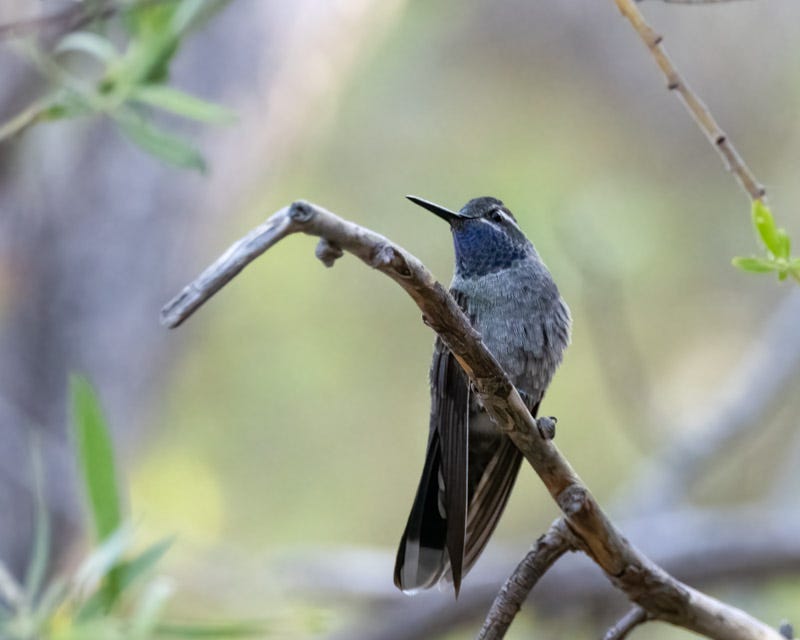
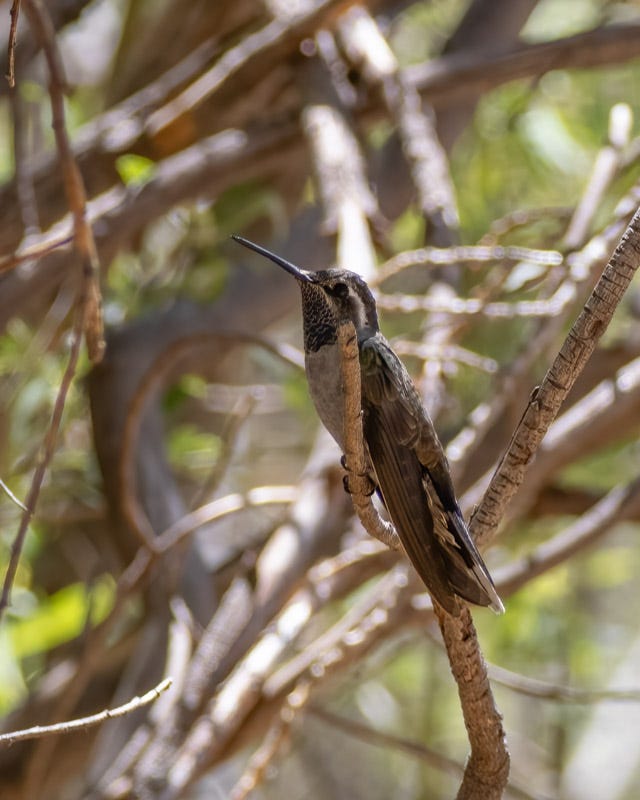
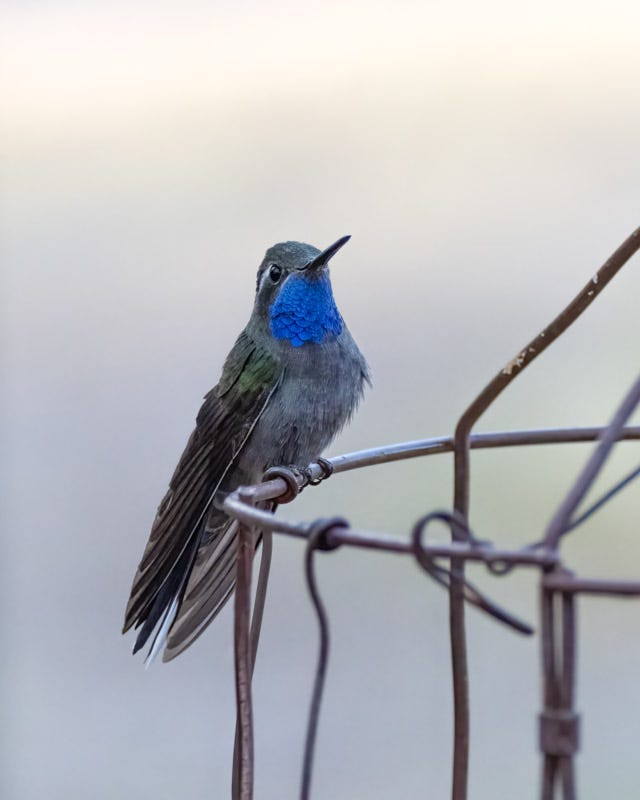


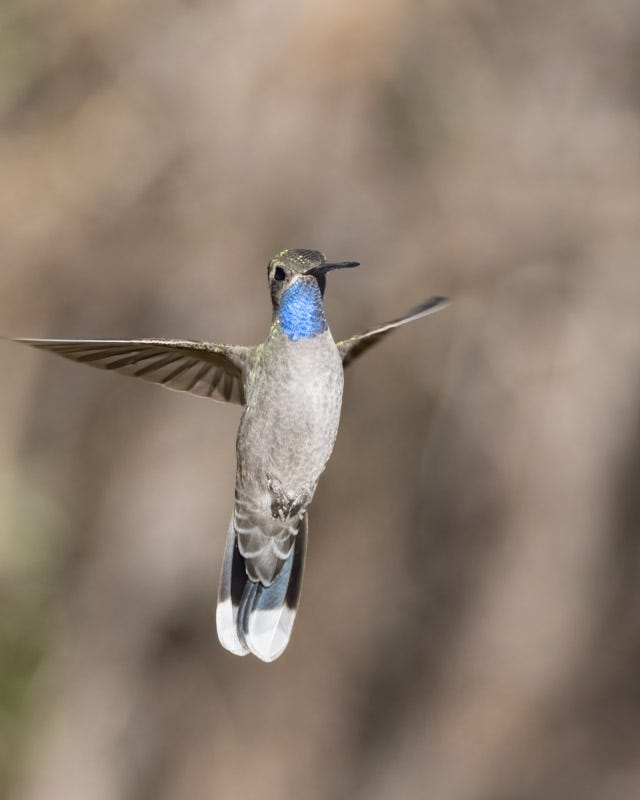
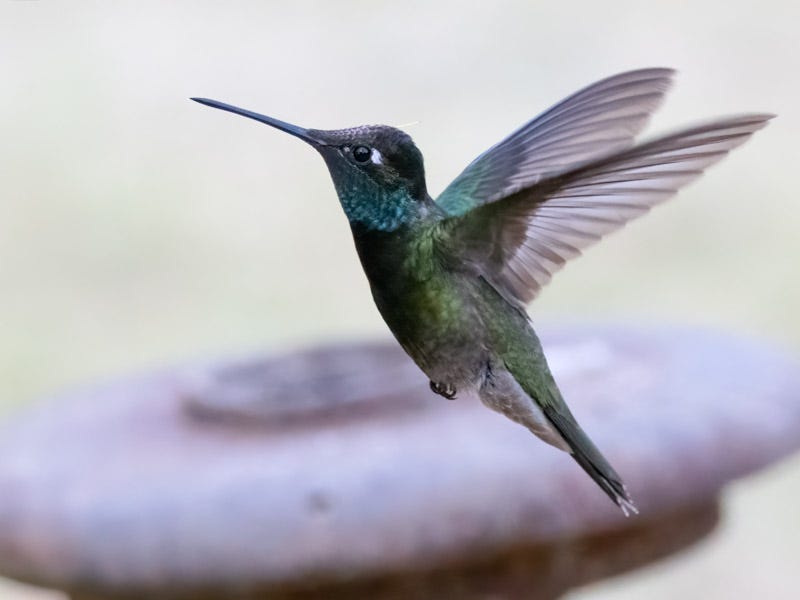
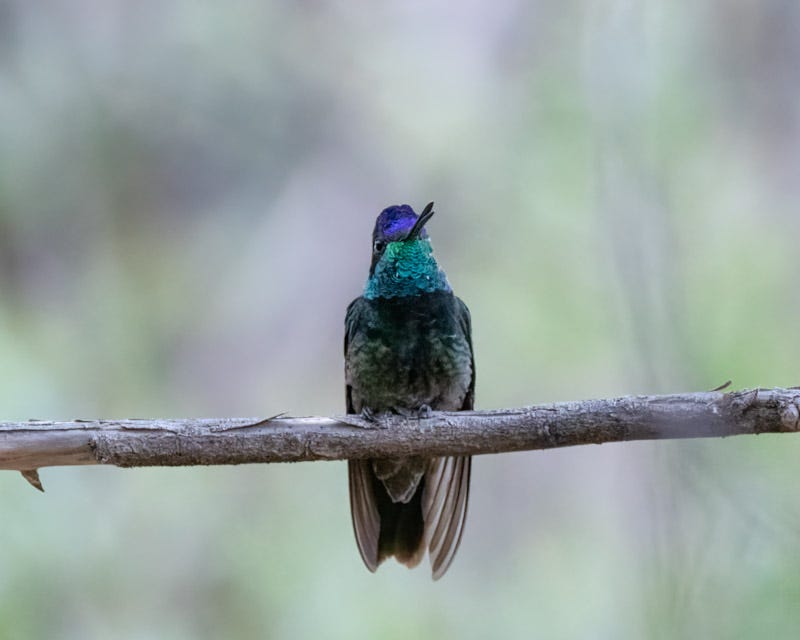

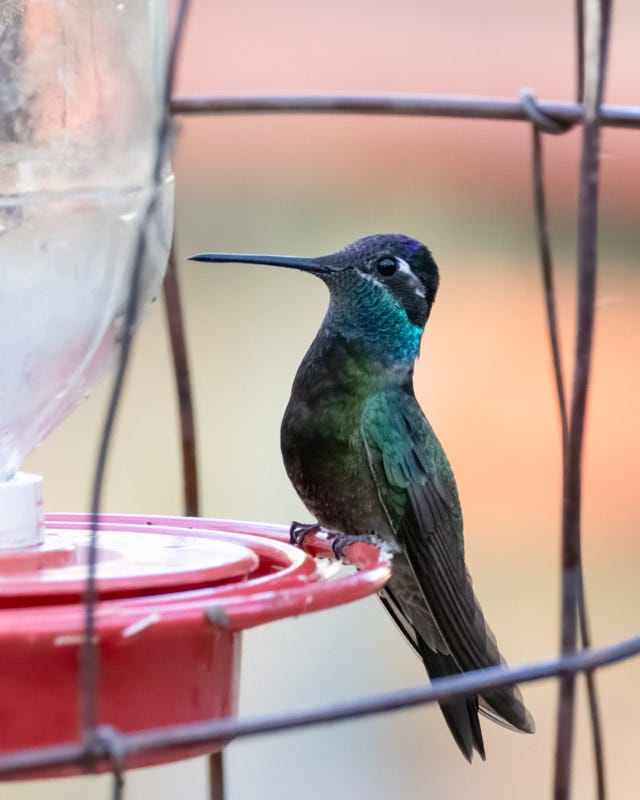
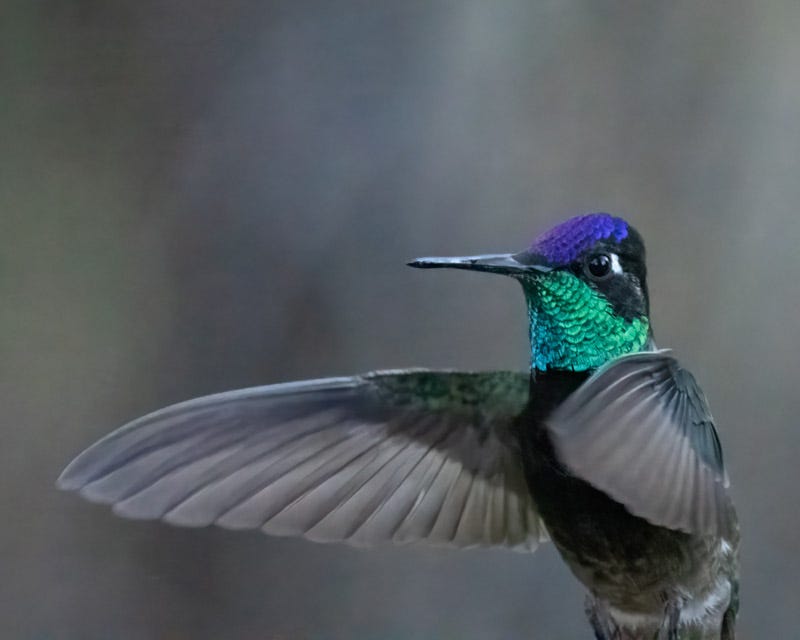
Big birds! One of the photos of the Rivoli hummer reminds me of the jump of a ballet dancer
Thanks!
Thanks for the wonderful photo series.